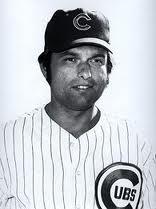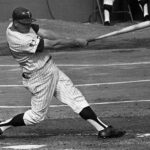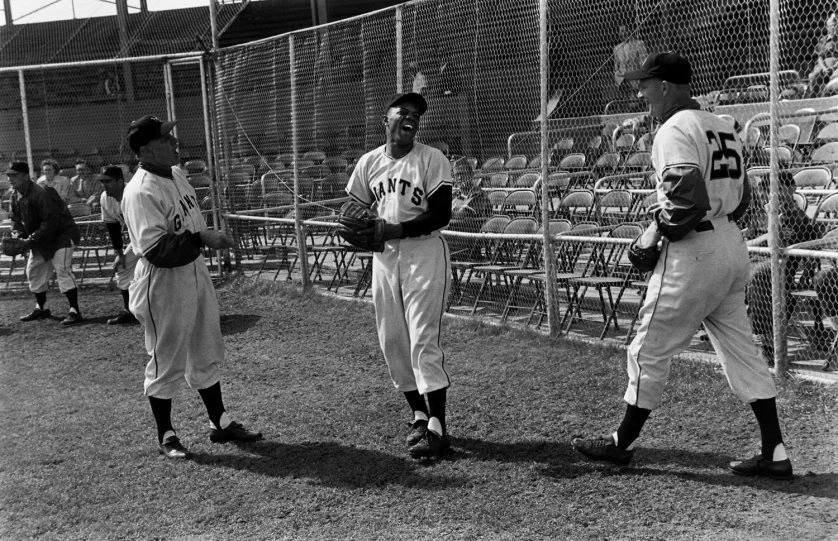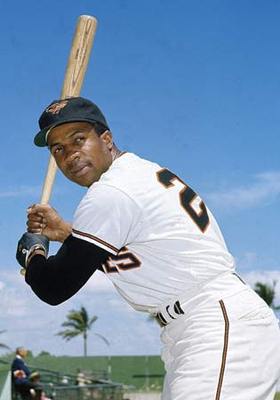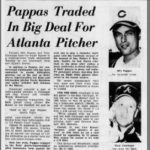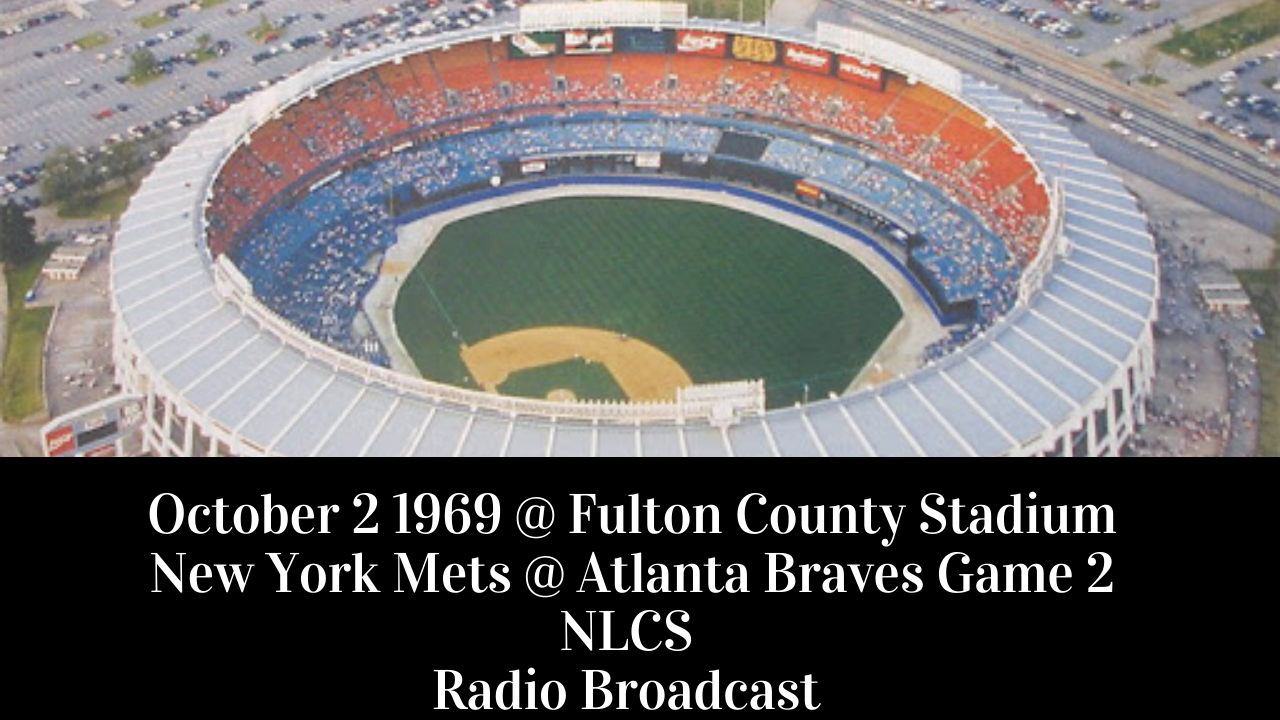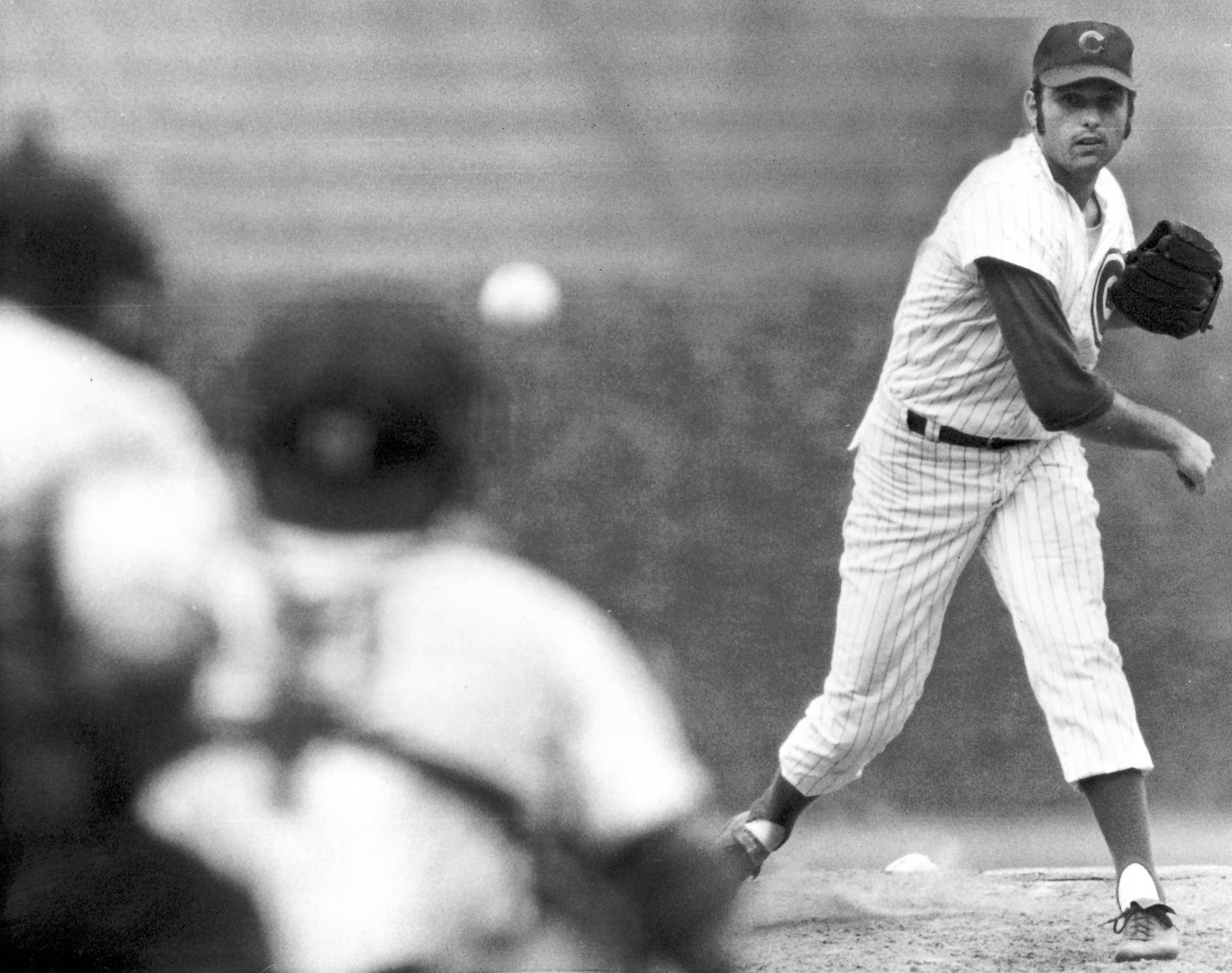Milt Pappas Stats & Facts
Milt Pappas
Position: Pitcher
Bats: Right • Throws: Right
6-3, 190lb (190cm, 86kg)
Born: May 11, 1939 in Detroit, MI us
Died: April 19, 2016 in Beecher, IL
High School: Cooley HS (Detroit, MI)
Debut: August 10, 1957 (11,480th in major league history)
vs. NYY 2.0 IP, 2 H, 0 SO, 0 BB, 0 ER
Last Game: September 18, 1973
vs. PHI 6.2 IP, 4 H, 1 SO, 0 BB, 1 ER
Full Name: Milton Steven Pappas
Nicknames: Gimpy
View Player Info from the B-R Bullpen
Nine Other Players Who Debuted in 1957
Johnny Roseboro
Roger Maris
Jim Landis
Claude Osteen
Milt Pappas
Lenny Green
Tony Kubek
Jim Gentile
Juan Pizarro
The Milt Pappas Teammate Team
C: Johnny Bench
1B: Lee May
2B: Pete Rose
3B: Brooks Robinson
SS: Luis Aparicio
LF: Billy Williams
CF: Vada Pincon
RF: Hank Aaron
SP: Robin Roberts
SP: Dave McNally
SP: Gary Nolan
SP: Phil Niekro
SP: Ken Holtzman
RP: Hoyt Wilhelm
RP: Clay Carroll
M: Leo Durocher
Vintage Baseball HOT ON EBAY
Card Collections ENDING SOON ON EBAY
MOST WANTED ROOKIE CARDS
VINTAGE SPORTS TICKETS
Baseball Hall of Famers
Notable Events and Chronology
A control specialist, Milt Pappas won 209 games for four teams, started the All-Star Game, and threw a no-hitter in his 17-year career. He never won more than 17 games in any one season, but he recorded 12-17 victories 13 times, including ten years in a row. After the 1965 season, just 26 years old, Pappas and two prospects were dealt to the Cincinnati Reds for Frank Robinson. The trade turned out to be one of the best in history…for the Orioles. Pappas struggled to fit in with the Reds, and spent his remaining years embroiled in several controversies while trying in vain to reach the World Series.
Biography
Born and raised in Detroit, Milton Steven Pappas earned attention when he went 7-0 with a 0.50 ERA in his senior year for Cooley High. Pappas was scouted by several teams, but signed with the Orioles at the suggestion of former pitcher Hal Newhouser, who had starred for the Tigers and lived in the Detroit area. Newhouser knew the young right-handers quickest route to the majors was with Baltimore, who needed young arms. Pappas signed for $4,000 and pitched just three games in the minor leagues before he was called up in August.
On August 10, 1957, Pappas made his big league debut against the New York Yankees, in relief. He stayed with the Orioles the rest of the year, and made their rotation in 1959, starting 21 games and posting a 10-10 record. It was his first of 11 consecutive seasons with double-digit wins. Using his 92-93 MPH fastball and a sharp slider, Pappas exhibited excellent control even as a young pitcher. He never walked more than 83 batters in a season.
Pappas quickly became the ace of the Orioles’ staff, earning an All-Star nod in 1962, when he started the game. In nine seasons with Baltimore, Pappas never had a losing record, winning between 13 and 16 games each year from 1959-1965. In December of 1965, at the age of 26, Pappas was traded to the Cincinnati Reds in a blockbuster deal that sent Frank Robinson to Baltimore. Fans in Cincinnati cried outrage at the deal, which made it difficult for Pappas to ever adjust in the Queen City. He struggled in his first season in the National League, posting a 4.29 ERA, the worst of his career, but managed a winning record at 12-11.
In 1967, Pappas led a young Reds’ staff that featured Gary Nolan, Jim Maloney, Sammy Ellis, and Mel Queen, winning a team-high 16 games. But when Pappas got off to a slow start the following year, the Reds jettisoned him to Atlanta in a six-player trade. There was more to the trade than just Pappas’s inconsistent performance, however. In 1966, Pappas and veteran Reds’ pitcher Joe Nuxhall exchanged words through the media after the season, with Nuxhall claiming that Pappas was giving less than 100% to the club. Nuxhall explained that he had to take Pappas’s starts twice during the ’66 season because Milt was suffering from “migraines” — which Nuxhall believed was nothing but nerves. “I’ve been around baseball long enough to know when a player isn’t giving a full effort.”
The following season, Pappas and Nuxhall butted heads again, when Pappas complained that the Reds were in violation of their contracts with the players because they weren’t allowing them to fly first-class. Pappas was especially upset that Nuxhall, now a broadcaster, was flying first-class while he and other players had to sit in tourist (or economy). Later, Pappas criticized the club when they refused to cancel a game the day of Senator Robert F. Kennedy’s funeral, in 1968. Due to these controversies, as much as his spotty performance with Cincinnati, the Reds dealt him to the Braves.
Pitching in a much smaller ballpark for Atlanta, Pappas seemed to welcome the change of scenery. He won 10 of 18 decisions for the Braves and fashioned a sparkling 2.37 ERA. But in 1969, Pappas suffered minor injuries that shelved him briefly in may and June, and then was lost for most of July. The result was a 6-10 record with a 3.62 ERA in 24 starts. Despite his struggles, Pappas achieved his goal of the post-season, as Atlanta won the NL West title.
In the playoffs, Pappas was used in relief in Game Two, and was hit hard — allowing three earned runs less than three innings, as the Mets swept the series. It was to be Pappas’s only post-season appearance.
The Braves gave up on Pappas after just three starts in 1970, when the right-hander was rocked for a 6.06 ERA and six home runs, including some relief appearances. But Pappas was convinced he could still be a major league starter, and after he was traded to the Chicago Cubs on June 23 for cash, he got the chance to prove it. With the Cubs, Pappas became the “Wrigley Field Wonder,” going 7-2 in the friendly confines with a 2.36 ERA. He finsihed his first stint as a Cub with a 10-8 mark and a 2.68 ERA. In 1971 and 1972, Pappas enjoyed a resurgence, winning 17 games each season, and continuing his winning ways in Wrigley Field. In 1973, he was 9-4 with a 2.25 ERA in Wrigley.
The 1972 season was the best of Pappas’s career for several reasons., He matched his career high with 17 wins, reached the 3,000 innings plateau, pitched a no-hitter, and won his 200th career game. The no-hitter came on September 2, in Wrigley, against the San Diego Padres.
Still a young man at 33 when he began the 1973 season, Pappas hoped to help the Cubs to the post-season and to add to his career totals. Unfortunately, fate was not on his side. He struggled to a 7-12 record with a 4.28 ERA, and even his Wrigley Field magic was gone. He finished the year with a sore arm, making his last major league start on September 18, at Wrigley against the Phillies in the first game of a doubleheader. He left the game leading 2-1, but the bullpen failed him and his career was over with 209 wins — two more than the man who had scouted and signed him, Hal Newhouser.
@ET-DC@eyJkeW5hbWljIjp0cnVlLCJjb250ZW50IjoicG9zdF90YWdzIiwic2V0dGluZ3MiOnsiYmVmb3JlIjoiTGVhcm4gTW9yZSBhYm91dCB0aGUgdGVhbXMsIHBsYXllcnMsIGJhbGwgcGFya3MgYW5kIGV2ZW50cyB0aGF0IGhhcHBlbmVkIG9uIHRoaXMgZGF0ZSBpbiBoaXN0b3J5IC0gLSAtIC0gLSAtIC0gIiwiYWZ0ZXIiOiIiLCJsaW5rX3RvX3Rlcm1fcGFnZSI6Im9uIiwic2VwYXJhdG9yIjoiIHwgIiwiY2F0ZWdvcnlfdHlwZSI6InBvc3RfdGFnIn19@
Vintage Baseball HOT ON EBAY
Card Collections ENDING SOON ON EBAY
MOST WANTED ROOKIE CARDS
VINTAGE SPORTS TICKETS
Baseball Hall of Famers
Factoids, Quotes, Milestones and Odd Facts
Played For
Baltimore Orioles (1957-1965)
Cincinnati Reds (1966-1968)
Atlanta Braves (1968-1970)
Chicago Cubs (1970-1973)
Similar: Jim Perry, Don Drysdale, Orel Hershiser, Catfish Hunter… Pappas wasn’t much different than Hunter or Drysdale, who are both in the Hall of Fame, having had the fortune of pitching for winning teams.
Linked: Frank Robinson, Hal Newhouser
Best Season, 1972
Pappas was a consistent pitcher, so it’s hard to choose his very best season. In 1972, at the age of 33, he won 17 games (matching his career high), and had a fine 2.77 ERA, while pitching half of his games in cozy Wrigley Field (where he had a remarkable 2.25 ERA). On September 2, he pitched a no-hitter against the Padres, and later that month he achieved his 200th career win, in the midst of a personal 11-game winning streak. As usual, he displayed superb control, walking just 29 batters in 195 innings.
No-Hit Fame
9/2/1972: For CHI (N) vs. SD (N), 8-0 at CHI. 9 innings pitched.
Post-Season Appearances
1969 National League Championship Series
Factoid
Milt Pappas retired the first 26 batters he faced on September 2, 1972. With a 2-2 count on pinch-hitter Larry Stahl of the Padres, Pappas resorted to his slider, but threw two of them low and away to walk Stahl and lose his perfect game. He retired the next batter to get the no-hitter. No Cub has ever thrown a perfect game.
Post-Season Notes
Pappas was traded by the Orioles in 1965, and they won the World Series in 1966. He was dealt by the Reds in ’68, and they went to the World Series two years later. With Atlanta he finally made the playoffs in 1969, but they were swept by the Amazin’ Mets. Pappas finished his career chasing the elusive World Series with the Cubs.
Feats: Pappas twirled a no-hitter against the San Diego Padres on September 2, 1972… On September 20, 1972, in Wrigley Field, Pappas twirled a seven-hitter to notch his 200th career victory, defeating the Expos, 6-2. It was his ninth straight win.
Transactions
Before 1957 Season: Signed by the Baltimore Orioles as an amateur free agent; December 9, 1965: Traded by the Baltimore Orioles with Jack Baldschun and Dick Simpson to the Cincinnati Reds for Frank Robinson; June 11, 1968: Traded by the Cincinnati Reds with Ted Davidson and Bob Johnson to the Atlanta Braves for Woody Woodward, Clay Carroll, and Tony Cloninger; June 23, 1970: Purchased by the Chicago Cubs from the Atlanta Braves; April 1, 1974: Released by the Chicago Cubs
Data courtesy of Restrosheet.org
Passing Prince Hal
Hal Newhouser, the Hall of Fame southpaw for the Detroit Tigers and other teams in the 1940s and 1950s, scouted Pappas in the Detroit sandlots. It was at Newhouser’s suggestion that the Orioles signed Pappas as a teenager. When Pappas won his first major league game, in 1958, Newhouser sent a telegram, telling the youngster, “Congratulations! Now you’ve got 206 more to go.” Newhosuer had won 207 games in the big leagues. On June 28, 1973, Pappas won his 207th game, tying Newhouser. Struggling in his final season, Pappas won just two more games, but he ended up with 209 wins, two more than the man who signed him.
Factoid
Milt Pappas was the first pitcher to win 200 games without having enjoyed a 20-win season.
61*
In 1998, as Mark McGwire and Sammy Sosa breezed past Roger Maris’s single-season homer record, Pappas admitted that he had grovved a pitch to Maris for the slugger’s 59th home run in 1961. On September 20, 1961, according to Pappas, he threw nothing but fastballs to Maris, after telling the Yankee slugger that’s what he would do. “I would do it all over again,” Pappas said, explaining that he was upset that commissioner Ford Frick was planning to place an asterisk next to the new homer mark should Maris eclipse Babe Ruth’s mark of 60.
His Own September 11th Tragedy
On September 11, 1982, Milt Pappas’s wife went to run errands near their home in Wheaton, Illinois, and disappeared. After a few hours, Pappas, who had been retired from playing for nearly a decade, became worried. After a few days passed, authorities became involved in a search for Mrs. Pappas. At first, there was speculation that she may have been kidnapped, and even Pappas himself was a suspect briefly, until he voluntarily passed a lie detector test. As the days turned to weeks and then months and years, little hope was left. Strangely, there were no signs of her car, clothes, identification or her body. For the first eight months after his wife’s disappearance, Milt left everything in their bedroom just as it was when she left. He consulted psychics, searched sanitariums and shelters, and turned to the media for help. Then, in 1987, almost exactly five years after her disappearance, the car Mrs. Pappas was driving was found in a shallow pond in Wheaton, just four blocks from their home. The pond was hidden from view, about 30 yards from the road, behind the Wheaton Fire Department building. The car was located when workers drained the pond to work on the shoreline
All-Star Selections
1962 AL
1965 AL
Replaced
Pappas was 19 years old in 1958 when he earned a spot in the Orioles’ starting rotation. The team was in transition, with four new starters in the rotation, including Pappas, and veterans Jack Harshman, Arnie Portocarrero, and Billy O’Dell.
Replaced By
Bill Bonham, in the Cubs’ 1974 rotation.
Best Strength as a Player
Control
Largest Weakness as a Player
No glaring weaknesses.
Other Resources & Links
Coming Soon
If you would like to add a link or add information for player pages, please contact us here.

